Thursday
12.2025
Exploring Ha Giang Loop Ethnic Communities And Rich Cultural Heritage
30 May - 2025
Ha Giang Loop ethnic communities offer travelers an unparalleled journey into Vietnam’s diverse cultural tapestry. Nestled in the northernmost reaches of the country, this city is not just a destination of breathtaking landscapes but also a living museum of ethnic diversity, where traditions thrive amidst the mountains and valleys. Recognized as Asia’s Leading Regional Cultural Destination in 2024 by the World Travel Awards, Ha Giang invites explorers to immerse themselves in its rich heritage and vibrant communities. With Mr. Biu Tour, you can experience the best of these ethnic cultures through a motorbike tour Ha Giang, all in a safe, immersive, and authentic manner.
Ha Giang is home to 20 officially recognized ethnic groups, with the Hmong (32.9%), Tay (23.2%), Dao (14.9%), Kinh (12.8%), and Nung (9.7%) being the most prominent. This mosaic of cultures contributes to the province’s unique identity, where each community maintains its own language, customs, and traditional practices. The province’s remote and mountainous terrain has played a crucial role in preserving these cultures, allowing visitors a rare glimpse into ways of life that have remained largely unchanged over time.
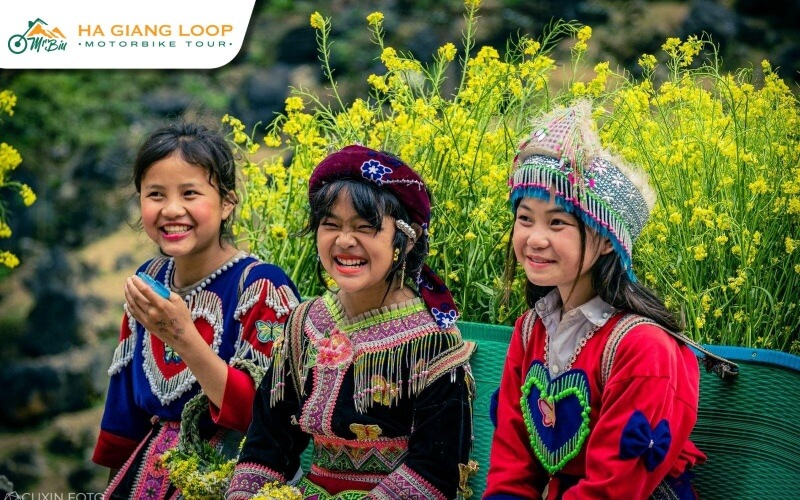
Among the vibrant Ha Giang Loop ethnic communities, the Tay people stand out for their rich cultural heritage and harmonious relationship with nature. As the second-largest ethnic group in Vietnam, with a significant presence in Ha Giang province, the Tay have preserved their unique traditions, architecture, and festivals, offering travelers an immersive cultural experience in the Ha Giang loop.
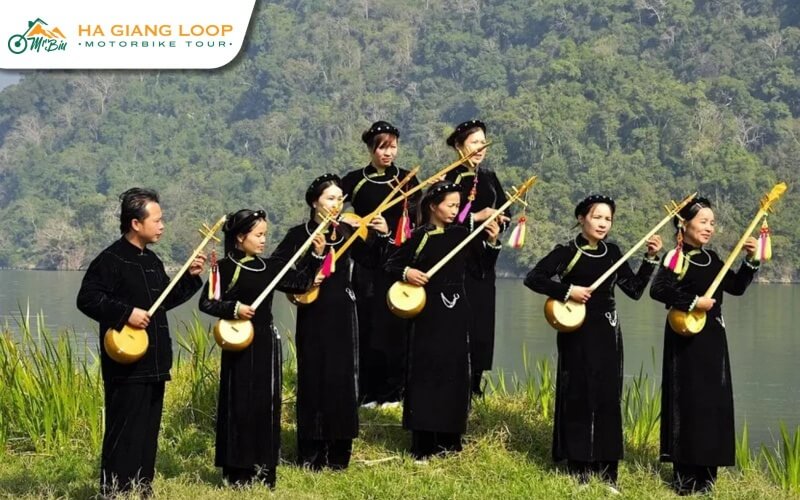
The Tay’s traditional stilt houses, known as “nhà sàn”, are emblematic of their architectural ingenuity and cultural values. Constructed primarily from wood and bamboo, these elevated structures are designed to withstand the region’s climatic challenges while fostering communal living. Beyond their functional design, these homes serve as custodians of Ha Giang ethnic traditions, housing ancestral altars and spaces for communal activities. In recent years, there’s been a concerted effort to preserve these architectural treasures, recognizing their significance in the broader context of Ha Giang ethnic tourism.
The Tay community’s cultural vibrancy is most evident during their traditional festivals in Ha Giang. The Long Tong Festival, celebrated in the early spring, is a plea for favorable weather and bountiful harvests. This event is marked by rituals, traditional games, and performances that encapsulate the essence of Ha Giang minority culture. Another significant celebration is the Moon Worship Festival, held on the full moon of the eighth lunar month, reflecting the Tay’s deep spiritual connection to nature and the cosmos.
For travelers keen on visiting ethnic villages in Ha Giang, Tay villages like Thon Tha and Du Gia offer immersive experiences. These villages, nestled amidst terraced rice fields and rolling hills, provide authentic insights into the daily lives of the Tay people. Engaging with locals, participating in traditional crafts, and staying in homestays allow visitors to delve deep into the heart of Ha Giang tribal communities, making their journey along the loop truly memorable.
The Hmong are the largest of the ethnic minorities in Ha Giang, accounting for approximately 32.9 % of the province’s population. From their kaleidoscopic clothing to age-old festivals and masterful handicrafts, the Hmong offer one of the richest Ha Giang tribal communities experiences.
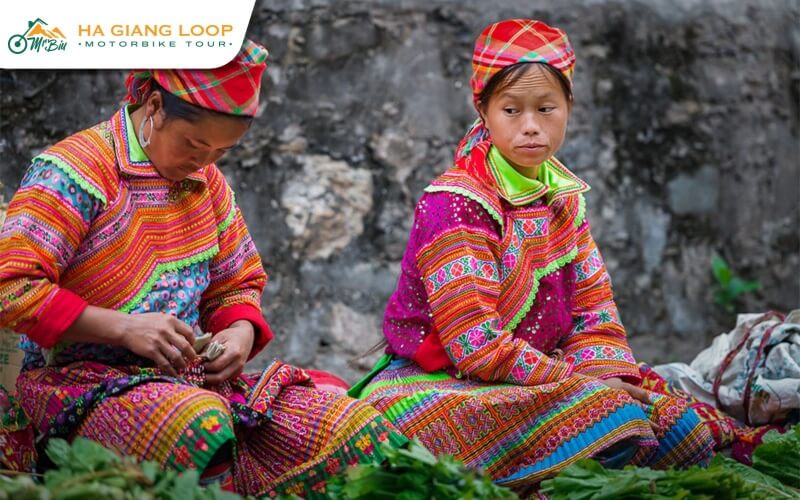
The Hmong are instantly recognizable by their elaborate costumes, women don pleated skirts richly embroidered with floral motifs and silver ornaments, while men wear indigo-dyed tunics accented with vibrant sashes. Major festivals such as the Hmong New Year, held each December–January, feature spirited torchlight processions, courtship games, and folk dances performed around communal fires
Hmong artisans are renowned for their batik and intricate embroidery, skills passed down through generations. In villages like Lung Tam, weaving cooperatives have grown from a dozen households in 2001 to over 100 by mid-2024, thanks to rising demand for authentic textiles. Visitors can join hands-on workshops to learn natural-dye techniques, using indigo, gallnuts, and tea, and create their own brocade souvenirs, making Ha Giang ethnic tourism both immersive and sustainable.
For those visiting ethnic communities in Ha Giang, Hmong villages in Dong Van and Meo Vac districts offer an unforgettable plunge into daily highland life. Homestay programs, run by local families, allow guests to share evening meals of thắng cố (Hmong stew) and learn rice-terrace farming techniques under ancestral guidance. Small-group eco-tours emphasize respectful engagement, ensuring that exploring Ha Giang ethnic communities benefits villagers directly and preserves the authenticity of Ha Giang Loop ethnic communities.
Read more: A Detailed Guide For Camping In Ha Giang Loop
Among the diverse Ha Giang Loop ethnic communities, the Nung people stand out for their rich traditions and exceptional craftsmanship. As one of the prominent ethnic minorities in Ha Giang, the Nung have preserved their cultural identity through generations, offering visitors a unique glimpse into their way of life.
The Nung are renowned for their expertise in weaving, blacksmithing, and pottery. Their textiles, often dyed in deep indigo hues, showcase intricate patterns that reflect their cultural narratives. In districts like Hoang Su Phi, traditional silver carving remains a vital craft, with artisans creating jewelry that holds both aesthetic and spiritual significance. These crafts not only serve as a source of income but also play a crucial role in preserving Ha Giang ethnic traditions.
For those interested in exploring Ha Giang ethnic communities, visiting Nung villages offers an immersive cultural experience. Villages near Quan Ba and Vi Xuyen are known for their traditional stilt houses and terraced rice fields, reflecting the Nung’s harmonious relationship with nature. Participating in local festivals, such as the Forest God Worship Ceremony, provides insight into their spiritual practices and communal values. Engaging with the Nung community allows travelers to appreciate the depth of Ha Giang ethnic tourism.
As one of the most visible Ha Giang ethnic groups, the Dao have woven Taoist beliefs with animist customs, creating ceremonies that resonate deeply with both locals and travelers. From the vibrant red headscarves of the Red Dao to the solemn rituals of the cap sac ceremony, visiting Dao villages offers a truly immersive cultural experience in Ha Giang loop, one of the things to do in Ha Giang Loop that highlights the resilience and ingenuity of Ha Giang tribal communities.

The Dao are primarily categorized into Red Dao and Black Dao, distinguished by their attire and rituals. Red Dao women adorn bright scarlet headscarves and intricately embroidered tunics, symbolizing vitality and protection, whereas Black Dao prefer darker, simpler garments that reflect their austere spiritual focus. Despite visual differences, both subgroups share a reverence for ancestors and nature, upholding Ha Giang ethnic traditions through communal ceremonies and everyday practices
Dao herbalists possess centuries-old knowledge of forest botanicals, using remedies to treat everything from joint pain to respiratory ailments. Herbal baths—prepared in bamboo tubs with local plants like lemongrass and calendula—are not only therapeutic but also central to Ha Giang minority culture, believed to cleanse both body and spirit. In 2025, local wellness retreats reported a 15 % increase in visitors seeking traditional Dao treatments, underscoring the growing appeal of Ha Giang ethnic tourism focused on holistic healing
As interest in Ha Giang ethnic tourism grows, several Dao villages have embraced community-based tourism as a tool for economic empowerment. According to 2025 data from the Ha Giang Department of Culture, Tourism & Sports, Dao communities participating in tourism saw a 28% increase in household income compared to 2022. Visiting ethnic communities in Ha Giang like the Dao not only enhances traveler insight but also supports the preservation of traditions at risk of fading due to modernization.
As one of the smaller Ha Giang Loop ethnic communities, the Lo Lo have preserved their unique customs, offering travelers an authentic glimpse into their way of life. Their colorful attire, traditional festivals, and musical heritage contribute significantly to the tapestry of Ha Giang minority culture.

The traditional attire of the Lo Lo is a vivid display of their artistic expression. Women don intricately embroidered garments adorned with geometric patterns, vibrant colors, and silver jewelry, reflecting their identity and social status. These elaborate costumes are typically worn during festivals and special occasions, showcasing the community’s commitment to preserving Ha Giang ethnic traditions.
The Lo Lo community celebrates various festivals throughout the year, each imbued with cultural significance. Events like the Spring Festival and Corn Harvest Festival feature traditional dances, music, and rituals that honor their ancestors and agricultural practices. These celebrations offer a profound cultural experience in Ha Giang loop, allowing visitors to engage with the community’s spiritual and social life.
While the Ha Giang Loop ethnic communities have preserved their rich cultural heritage for centuries, they now face modern challenges that threaten their traditional ways of life:
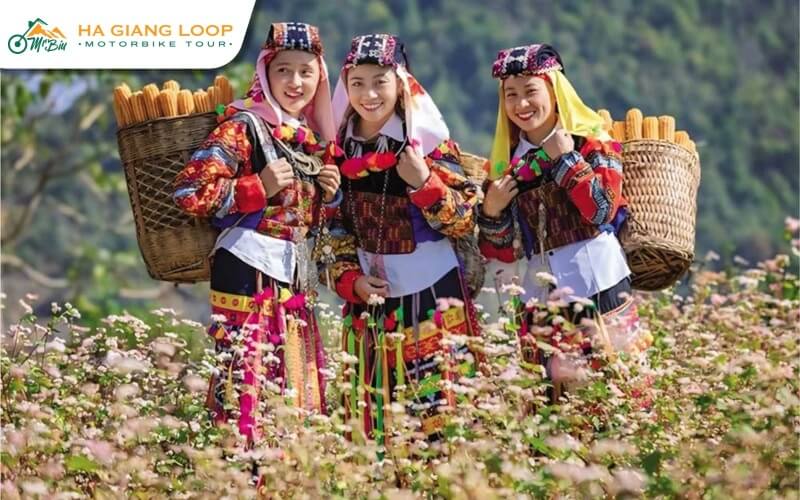
Join the Ha Giang Loop ethnic communities offers a truly immersive experience into the unique cultures of northern Vietnam. Here are some practical tips to help you enjoy the cultural experience in Ha Giang loop while respecting the traditions of the Ha Giang ethnic communities, including things not to do in Ha Giang Loop to ensure a respectful and meaningful visit.
When exploring Ha Giang ethnic communities, it’s important to approach the local people with respect for their cultural norms and traditions. Make sure to seek permission before taking photographs of the people or their property, as this may not always be welcomed. Ha Giang ethnic traditions are deeply rooted, and it’s vital to understand that certain customs may be sacred.
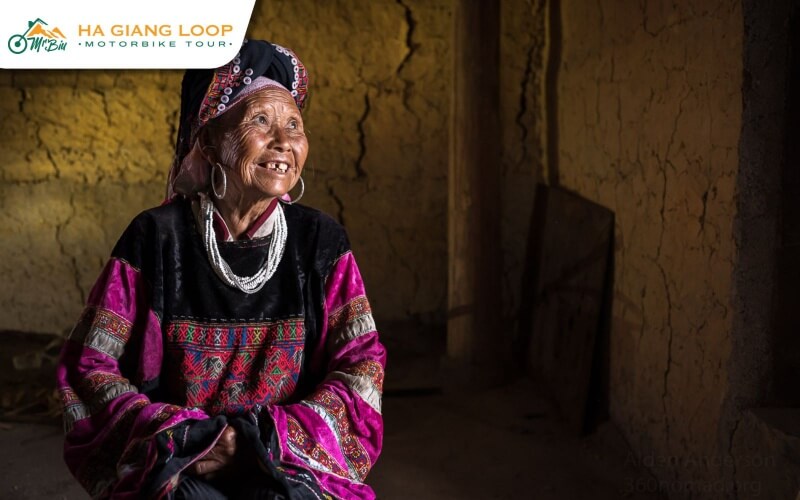
One of the highlights of visiting ethnic communities in Ha Giang is the chance to purchase handmade goods from local artisans. These crafts are not only beautiful but also play a key role in preserving Ha Giang ethnic culture. Visiting the Ha Giang loop minority villages gives you the chance to experience the region’s vibrant market scenes and take home unique pieces of art while supporting local economies.
While Vietnamese is the official language, many of the ethnic minorities in Ha Giang speak their own languages, such as Tay, Hmong, or Nung. If you’re planning to stay for an extended period or interact deeply with the locals, learning a few phrases in the local language will be appreciated and will enrich your Ha Giang ethnic tourism experience. Engaging with the people in their native tongue demonstrates respect for their culture and strengthens your connection with the community.
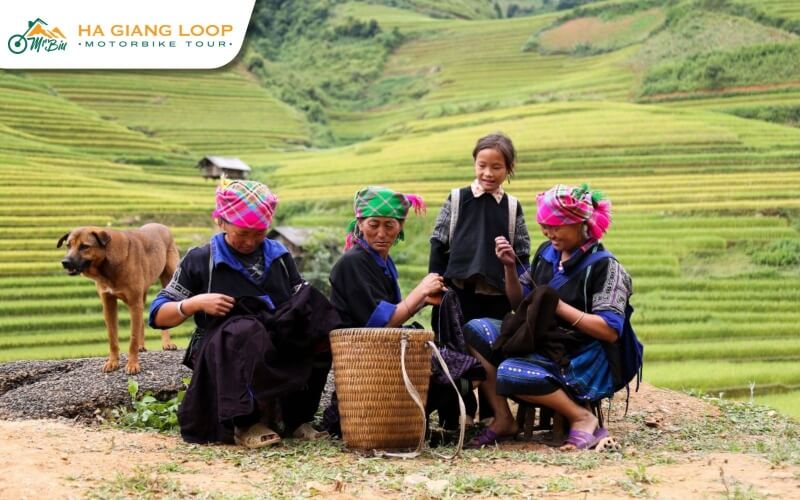
Here are some frequently asked questions that will help you better understand and prepare for your visit to Ha Giang’s ethnic communities.
Ha Giang is renowned for its vibrant ethnic markets, where locals from various Ha Giang ethnic groups gather to trade goods and celebrate their cultural heritage. Notable markets include:
Ha Giang is home to a rich mosaic of ethnic communities. According to recent data:
When exploring Ha Giang ethnic communities, it’s essential to approach photography with respect. While many locals are open to having their photos taken, always ask for permission beforehand. In some areas, especially in more remote Ha Giang loop minority villages, photography can be seen as intrusive. Always be respectful of their wishes, as part of responsible Ha Giang ethnic tourism.
The Ha Giang tribal communities predominantly reside in the mountainous regions of the province, where the landscape is as varied as the cultures. The Ha Giang loop minority villages are scattered throughout, with some of the most famous being in Dong Van, Meo Vac, and Yen Minh. These villages offer a rare glimpse into the lifestyle and culture of Vietnam’s northern ethnic minorities in Ha Giang.
Staying in a homestay is one of the best ways to experience the authentic lifestyle of Ha Giang ethnic communities. You’ll be welcomed into the homes of locals where you’ll experience traditional meals, the best restaurants in Ha Giang, local customs, and hospitality. Most homestays offer a cultural experience in Ha Giang loop that includes learning about Ha Giang ethnic traditions and participating in daily activities, giving you an insider’s look into their way of life
Booking a Ha Giang ethnic tourism tour in advance is highly recommended, especially since the ideal time to visit Ha Giang is from March to May and September to November. Tours often fill up quickly, and securing your spot ensures you won’t miss out on exploring the best of Ha Giang ethnic communities and the stunning landscapes. Planning ahead allows you to focus on enjoying the trip, rather than worrying about logistics.
One of the most enjoyable aspects of visiting ethnic communities in Ha Giang is the opportunity to participate in local crafts. Many villages offer workshops where you can learn traditional skills such as weaving or embroidery, providing you with a hands-on experience of Ha Giang ethnic traditions. It’s a great way to deepen your understanding of the local culture and take home a unique souvenir that’s crafted by your own hands.
If you’re looking for an authentic and immersive experience in Ha Giang Loop ethnic communities, Mr. Biu Tour Ha Giang is your perfect choice. We provide expertly curated tours like the Ha Giang motorcycle tour 3 days and Ha Giang motorcycle tour 4 days, taking you deep into the heart of Ha Giang ethnic groups, offering a chance to experience the rich traditions, unique cultures, and stunning landscapes of the region.

Founded in 2019, Mr.Biu Tour has quickly become a trusted name in providing authentic travel experiences to Ha Giang tribal communities. Our meticulously designed Ha Giang loop tours ensure that you not only see the beauty of the land but also dive into the soul of its people and culture.
Embarking on a journey through Ha Giang Loop ethnic communities is an experience that will stay with you long after you’ve left. As you plan your next trip, consider Mr. Biu Tour Ha Giang for an unforgettable experience that blends adventure with cultural immersion. With its expert guides and well-crafted itineraries, you’re bound to have a safe, enriching, and memorable journey. Don’t forget to check your packing list for Ha Giang to ensure you’re fully prepared for this incredible adventure.